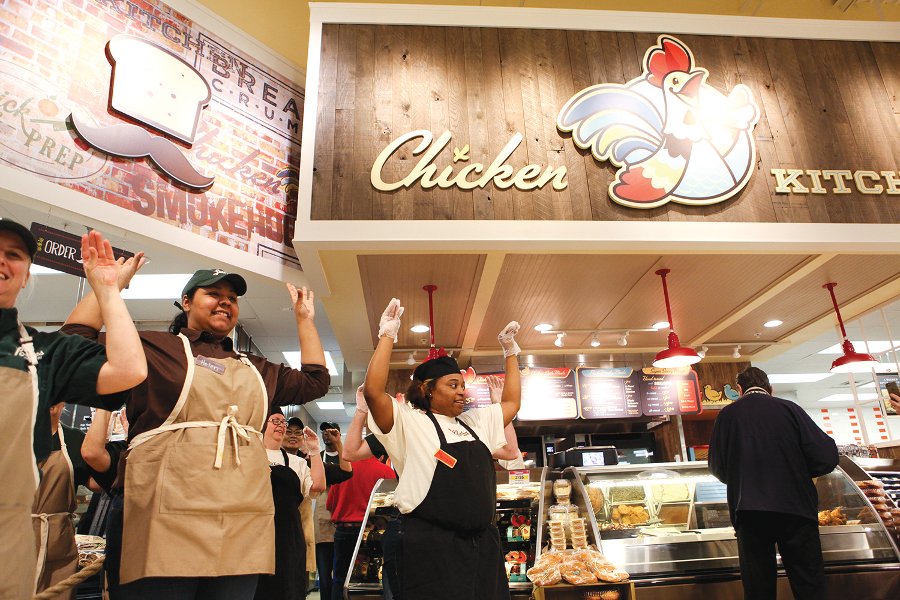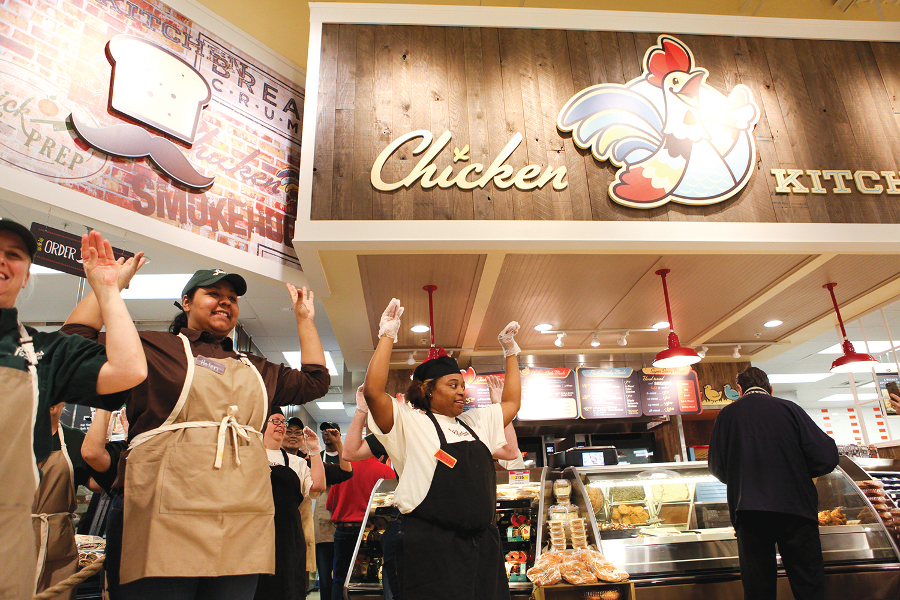
An Entirely New Customer Experience
Looking back 10 or even five years and comparing that shopping experience to today’s retail reality, the difference is vast. As frictionless checkout and delivery become commonplace in grocery conversations, one can’t help but ask, what does this mean for the future of grocery? With providers teasing the democratization of frictionless checkout, which could enable adoption by the masses and not just the likes of Amazon, there’s much to discuss.
“Many of our grocer clients are realizing successes by leveraging tech that blurs the line between digital and brick-and-mortar,” says Steve Duffy, VP of grocery for Orlando, Fla.-based Cuhaci & Peterson Architects, Engineers and Planners. “In order to be where their consumers are, they have to virtually be omnipresent. The question is no longer whether or not to delve into omnichannel, it is determining which channels to focus on.”
Duffy continues: “We are creating an entirely new customer experience for grocery and food, end to end. We are challenged with literally understanding the implications of the product, the freshness and the reality of getting it into the consumer’s home.”
Successfully getting food to consumers’ homes — the “last mile” — is “a battleground of epic proportions,” says Cuhaci & Peterson Principal Steven Blevins.
“This is an arena with fierce competition, and even fiercer challenges to making sure it is both a profitable and viable venture for grocers,” Blevins says. “Artificial intelligence and robotics are helping overcome some of the challenges, but the paradigm shift to stay close to customers, increase automation and do this at a scalable level is a conundrum that requires agility to overcome.”
Eric Thorsen, who leads global business development in retail and CPG for Santa Clara, Calif.-based tech company Nvidia, sees significant interest in using new technology like GPU (graphics processing units) in the retail industry.
“Retailers are interested in computer vision to monitor shoppers, prevent loss and enable a cashier-free departure,” Thor-sen says. “This keeps in-store associates focused on contact with the consumer, rather than ringing registers. The end result is a more personal interaction, assisting customers with questions and providing advice on products. Customer satisfaction improves, and revenues increase as a result.”
And while there are more and more ways to obtain product (in-store, pickup, driveup, delivery), one added trial for grocers is maintaining relevance across multiple generations, all with varying levels of comfort with omnichannel options. Whether that’s through innovations that allow small to midsize grocers to embrace frictionless technologies, the improvement of micro fulfillment and last-mile capabilities, improved experiential shopping for increased brand engagement, or creating a “digital twin” to allow omnichannel consumers to have a “virtual” shopping experience, keeping up in an environment that’s undergoing seismic technological changes will set industry players apart moving forward.
“As retail store designers, creating an effective, stimulating experience involves stirring emotions to form powerful bonds with the target demographic,” says Lewis Shaye, founder of South Carolina-based Grocerant Design Group and former VP of culinary concepts for the Schenectady, N.Y.-based Price Chopper supermarket chain. “A brand refresh on its own is not powerful enough to cause people to feel remarkably different; it won’t deliver the results long-term. Unlocking the unique differentiators that drive people to shop with a particular retailer and using technology to target unmet needs in the marketplace will be what sets apart the store of the future.”
Duffy says a store-of-the-future design “takes the optimal shopper’s various needs and ability to acclimate to the disruption in new retail into consideration. Their future interactions with both the physical and virtual store worlds help shape our vision of what this future store could be.”
Five primary strategic underpinnings are central to change and are no longer considered trends, according to Duffy: technology, convenience, experience, fresh food and local.
Future grocery design will be significantly affected by technological advances like artificial intelligence, machine learning and robotics. The compounding effect of these multiple technologies bears great significance in the rate of change, as well as what can arguably be described as a metamorphosis into the next grocery design innovation curve.
This becomes key to bear in mind for traditional grocers, especially the smaller or regional operator; obtaining a complete understanding of current trends and coming innovations as they develop a strategic game plan will play an integral role in harnessing the operational efficiencies needed to maintain viability in tomorrow’s marketplace.
Other technological advances involve store infrastructure improvements, including predictive equipment, energy efficiencies in lighting and refrigeration systems, and possibly augmented or virtual-reality options that give consumers a wealth of information about products.
“As the demand for fresh and local options expands, the ability to provide more sophisticated and accessible information may bring about ‘digital twins’ as one way to fulfil this demand,” Blevins says. “Imagine consumers being able to ‘virtually’ walk through a store and take their time to look over new products without ever leaving their home. With advancement in BIM [building information modeling] technology, this is something that is not far off.”
To deliver a compelling, experiential and customizable shopping experience, as the evolution of grocery intensifies, grocers must maintain an advanced technology store platform and remain agile enough to provide the best of online and in-store shopping in a dynamic retail environment. Together, all of these elements coalesce into a store of the future that engages on many levels, and one that can win in the new retail frontier.

